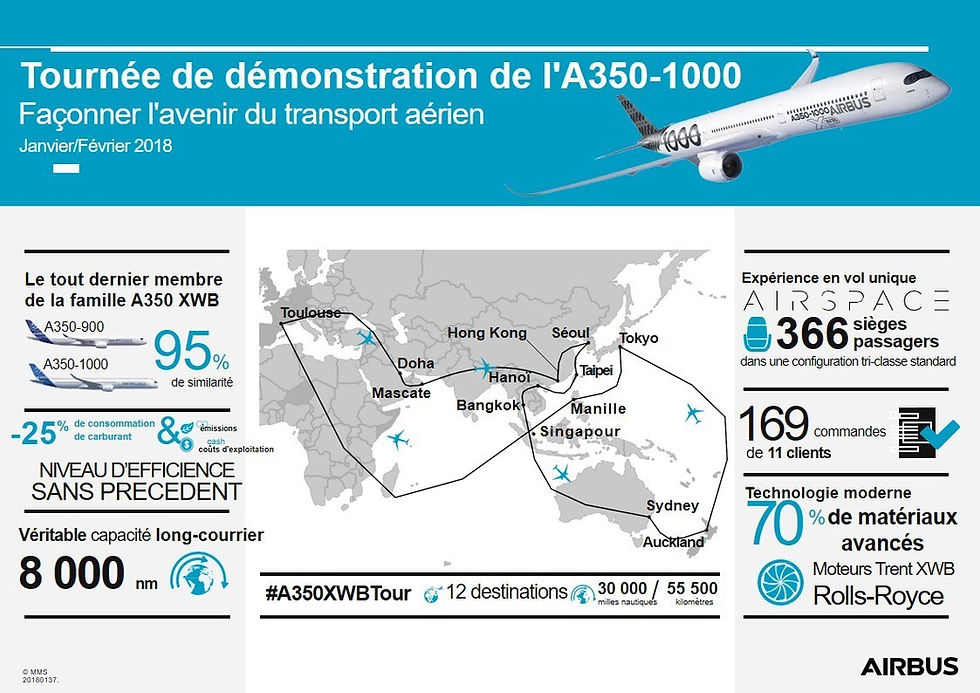A350-1000 is shaping the future of Air travel
- Michaël
- Jun 7, 2019
- 2 min read
From its manufacturing to certification in less than a year, and first flight November 24, 2016 at Toulouse-Blagnac Airport, France, after 1 600 flying hours, The Airbus A350-1000 will be on display for the first time at the Paris Air Show, from June 17 to 23.

The A350-1000 aircraft is the longest member of the A350 XWB family of twin-engine passenger jets. The aircraft was developed by Airbus to target the mini-jumbo segment, which includes large twin-engine jets carrying 350 people. It will also serve long-haul routes such as Shanghai-Boston and Paris-Santiago.
For its tests, the aircraft underwent cold-weather trials in Iqaluit, Canada, and was exposed to temperatures as low as -37°C during an overnight cold soak in March 2017. A long-distance flight was completed in May 2017, with 310 passengers onboard.
The A350-1000 aircraft obtained type certification from the Federal Aviation Administration (FAA) and the European Aviation Safety Agency (EASA) in November 2017.
Aerospace by Airbus, a new standard of comfort.
Designed with airlines priorities in mind, the A350XWB meets the multiple challenges of high fuel prices, rising expectations from passengers and increasing environmental concerns by using environmental-friendly materials in order to reduce harmful effects.
Airbus received a total of 169 orders for the A350-1000 aircraft from 11 customers across five continents. The aircraft entered service with the launch customer Qatar Airways in February 2018 where Qatar Airways converted five Airbus A350-900 to larger 1000 and received the first one on 20 February 2018.
The Airbus company is ready to attach the Boeing market even though, there is a significant competition between the new A350-1000 and 777-300ER.
Airbus seizes all the opportunities to make A350-1000 design and features so innovative and technically efficient.
For the innovation, the A350 XWB is truly innovative, with new technology throughout the entirety of the aircraft. From the design of the wings that morph and change shape in flight to obtain optimal efficiency to the flight controls and system that reduce the pilot’s workload, this aircraft utilises modern technology to create a better way of flying.
Nowhere is this innovation more apparent than in the A350 XWB’s fuselage, built with carbon-fibre reinforced plastic. The combination of these technological advances ensures that the A350-1000 burns 25% less fuel than its nearest competitor, saving money and reducing harmful effects to the environment.

The A350-1000 has an increased efficiency as well, powering the A350-1000 are Rolls-Royce Trent XWB-97 engines that allow the largest member of the A350 XWB Family to attain high levels of efficiency.
Each engine provides 97,000 lbs. of thrust on takeoff – the most powerful engine ever developed for an Airbus aircraft – providing additional payload capability and range.
With these specially-tailored Trent XWB powerplants, the A350-1000 is capable of long-haul routes to emerging markets such as Shanghai-Boston or Paris-Santiago, as well as more traditional flight segments as Manchester-Los Angeles or Dubai-Melbourne.
www.surfeo.eu








Comments